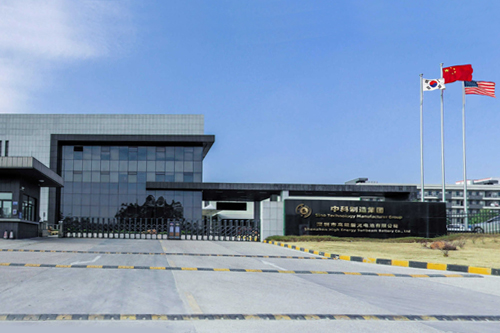Japan's 1.2V Ni-MH battery technology development has made progress and is
expected to last about 10 years
If it can travel 500 kilometers under a full charge, it will match the
performance of gasoline vehicles. The Ministry of Economy, Trade and Industry of
Japan and others believe that this is one of the conditions for the
popularization of pure electric vehicles, and have proposed a goal to be
achieved by 2030. China, where pure electric vehicles are rapidly gaining
popularity, has ended subsidies for models with a driving range of less than 150
kilometers and increased subsidies for models with a long driving range.
Lithium-ion batteries were commercialized in 1991 and are used in laptop
computers and video cameras. It was used in mass-produced pure electric vehicles
in 2009. The driving distance on a full charge is about 200 kilometers. It is
generally believed that in the early 2010s, it would be difficult to achieve 500
kilometers with the technology at the time, and that it would be replaced by a
new generation of batteries such as all-solid-state batteries around 2030.
The development of next-generation batteries is becoming increasingly
active around the world, but there are many technical issues. On the other hand,
the technological development of lithium-ion batteries has made progress, and a
breakthrough of 500 kilometers is increasingly becoming a realistic possibility.
Researchers and others predict that "lithium-ion batteries can continue to be
used for about 10 years."
Lithium-ion batteries generate electricity and charge by moving lithium
ions between positive and negative electrodes. To increase the capacity of a
battery, it is necessary to increase the number of ions stored in the
electrodes, or to reduce the internal resistance so that electrons can pass
through more easily.
Sekisui Chemical developed the technology for the positive electrode and
worked hard on the structure of the added carbon material to make it easier for
electrons to flow. The channel through which electrons pass through the positive
electrode is expanded, and the flow of electrons becomes smoother, about 10
times that of the past. In addition to obtaining a large amount of the current
that occurs, the electrodes are less susceptible to damage and durability is
improved.
The positive electrode will be thickened to allow more lithium ions to be
obtained. In the experiment, the battery capacity increased by about 30%. The
cruising range can be increased from the current 400 kilometers to more than 500
kilometers. It is planned to be sold as parts by 2021.
Asahi Kasei increased the capacity by about 20% by mixing silicon oxide
into the negative electrode. Adding silicon-based materials to the negative
electrode using carbon-based materials makes it easier to store lithium ions and
increases capacity. However, there is a problem that some ions cannot be
released if they are captured. By pre-injecting ions into the negative
electrode, the captured parts do not move, so that the acquisition and release
of lithium ions becomes smooth. Asahi Kasei strives to realize practical use in
a few years.
In addition, research into using previously non-existent electrode
materials is also advancing. Professor Naoaki Yabuchi of Yokohama National
University collaborated with Panasonic to develop a positive electrode mixed
with fluorine. Not only metal, but also oxygen can be used for the flow of
electrons within the electrode, doubling the capacity. Sumitomo Chemical is
promoting the development of negative electrodes using aluminum and has set a
goal of increasing the capacity to 2.5 times.
Japan's Ministry of Economy, Trade and Industry will develop technology
that makes it possible to completely use up 1.2V Ni-MH battery power starting
from fiscal 2019. To prevent fire accidents, etc., the battery is used with a
capacity lower than the upper limit. We will support the development of sensors
that can accurately detect remaining power and increase the usable amount. 250
million yen has been included in the 2019 budget, and we strive to realize
practical use by 2023.
Japan once took the world by storm in the field of lithium-ion batteries,
but its patent applications declined after 2011. In China, patent applications
from universities and companies increased, and by 2015, Japan and China each
accounted for one-third of the total. In order to increase the cruising range,
the development of technology to significantly increase battery capacity is
advancing, and patent applications in China are expected to further
increase.
Introduction to lithium-ion batteries:
A 1.2V Ni-MH battery is a secondary battery (rechargeable battery) that
relies primarily on the movement of lithium ions between the positive and
negative electrodes to work. During the charge and discharge process, Li+
intercalates and deintercalates back and forth between the two electrodes:
during charging, Li+ is deintercalated from the positive electrode and embedded
in the negative electrode through the electrolyte, and the negative electrode is
in a lithium-rich state; during discharge, the opposite is true.
Read recommendations:
Coin Battery CR 2430
Demand market demand for iron phosphate lithium batteries in communication base stations
Standard conditions for lithium-ion battery industry
602535 polymer battery company
9V carbon battery











































 360° FACTORY VR TOUR
360° FACTORY VR TOUR
 Whatsapp
Whatsapp
 Tel
Tel Email
Email TOP
TOP